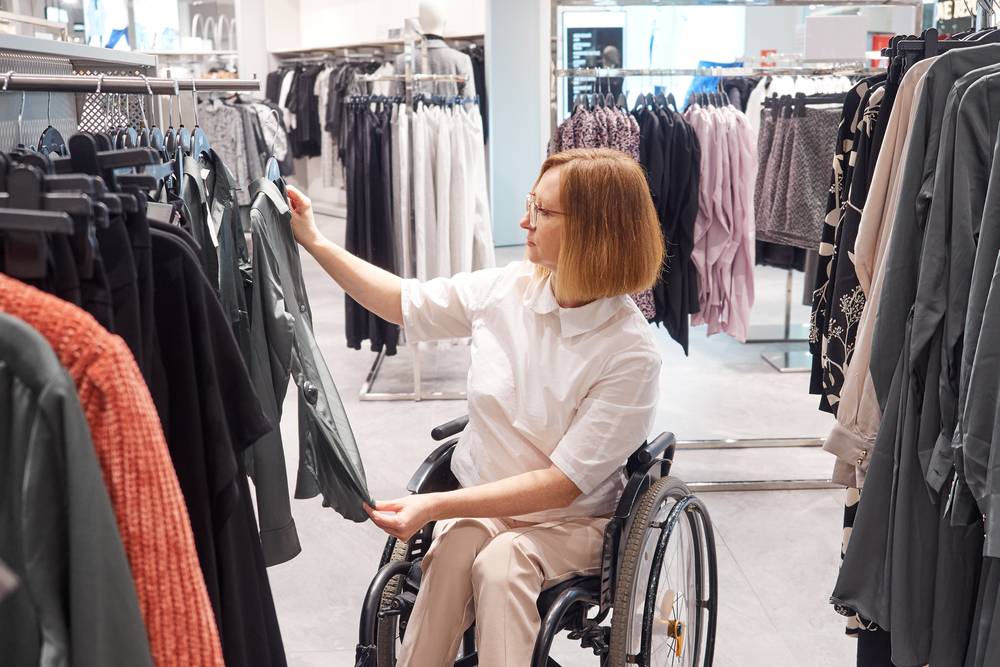
Adaptive Clothing for Wheelchair Users
For the countless individuals who rely on wheelchairs every day, it may be difficult to find clothing that is genuinely comfortable and accommodates their unique needs. Common clothing choices rarely address the unique hurdles that wheelchair users face. However, an upward trend has been witnessed in the availability of adaptive clothing aimed at improving accessibility, comfort, and ease of dressing.
What Makes Traditional Clothing Challenging for Wheelchair Users?
Standard clothing presents challenges for people using wheelchairs from different perspectives. Firstly, the seat and back of a medical device may exert pressure on clothing. This produces discomfort, restricted movement, and wear and tear over time. Typical problem areas are the inner thighs, back of knees, and lower back.
Donning and doffing clothing may be problematic for those with reduced capability of movement, particularly when dealing with garments like jeans or tops. As they come with narrow openings, closures in difficult-to-reach locations, or confusing waistbands.
The seated posture of wheelchair users alters the proportions and stress points compared to those who stand, making standard clothing silhouettes that rarely flatter or feel natural.

The Features of Adaptive Clothing
Fortunately, you can find clothing designed specifically for wheelchair users, addressing numerous challenges. Here are key characteristics of commendable adaptive fashion:
- Stretch panels and gussets: By using ribbed knit fabric and incorporating gussets in areas of concern, users can enjoy unrestricted movement while preventing the occurrence of pressure sores.
- Easy access openings: Zippers positioned on the front or back of trousers, for instance, can solidly simplify the process of putting them on. This eliminates the need to stand or struggle with overhead clothing. The same applies to adaptive tops, dresses, and undergarments as well.
- Reinforced fabric: Adaptive clothing for seniors often incorporates premium fabrics and reinforced stitching to enhance longevity and safeguard against tearing during repetitive bending. Commonly selected materials include Lycra, polyester blends, and denim.
- Loose or adjustable waistbands: Diagonal side openings, drawstrings, elastic panels, or hook-and-loop fasteners contribute to achieving an optimal fit while in a seated position. Such next-level garment facilitates self-dressing with minimal exertion for people living with limited mobility.
- Alternative closure types and placements: Buttons, magnets, hook-and-eye tabs, or Velcro can serve as alternatives to challenging zippers. The mentioned trinkets enable one-handed closure for people who face difficulties in accessing or visualizing specific areas.
- Smooth, flat seams: To prevent any potential skin irritation, it is important that the seams on the inner legs or arms lay flat against the skin without any bunching or rubbing.
Adaptive Styles for Men and Women
Adaptive wheelchair clothing offers a myriad of stylish options for both men and women, ensuring inclusivity. For men, these include button-down shirts, polos, jeans, cargo pants, shorts, sweatpants, and modified underwear. Women can choose from pretty blouses, t-shirts, jeans, leggings, cardigans, and camisoles with shelf bras, as well as adaptive bras and briefs.
These designs prioritize comfort and practicality, with machine-washable fabrics suitable for everyday wear. Some brands even provide smart-casual and business-style selections to cater to personal preferences. Moreover, unisex adaptive lines are available.
Other than apparel, there are also wheelchair-friendly accessories available that that serve the purpose of making daily life easier. These include stretchy socks, shoes, and slippers designed for swollen or misshapen feet. You can find seat belt extenders for comfortable safety restraints in vehicles with mobility devices as well as weighted therapy lap pads to provide warmth in colder temperatures.

Key Considerations When Shopping
When shopping for adaptive clothing to accommodate your wheelchair and lifestyle, keep these key factors in mind:
- Fit - Take into account areas that may require additional space or flexibility - such as the inner thighs, back of the knees, and lower back. When measuring, be sure to do so while seated to ensure a proper fit for the inseam, rise, and waistband. To prioritize comfort, consider trying brands that offer elastic or adjustable waists as well as deep-set sleeve options.
- Fabric - Breathable and stretchy fabrics containing spandex or lycra offer unrestricted movement. Durable materials withstand the test of time, while soft and smooth fabrics provide comfort without irritating the skin.
- Access - Identify which closure types and placements facilitate the easiest dressing, taking into account your range of motion. Potential choices include side openings, magnetic closures, front zippers, and alternative waist positions.
- Seams & Reinforcements - Flat and smooth inner leg seams are designed to prevent skin irritation, while reinforced fabric provides durability and protects against tears during repetitive movements.
- Easy On/Off - Flexible openings, different closure options, and strategic positioning enable effortless donning and doffing of garments while seated, requiring minimal exertion.
- Quality & Durability - Evaluate the construction and stitching quality. Adaptive clothing endures more usage, so long-term durability translates to cost savings.
Frequently Asked Questions
What Adaptive Shoes Work Best for Wheelchair Users?
Shoes with stretchy material, velcro closures, and wide/extra depth toe boxes allow for swollen feet or toe deformities common in wheelchair users. Search for brands that specifically specialize in adaptive footwear. Consider custom orthotic inserts for extra support.
Where Can I Buy Affordable Adaptive Clothing?
Many major retailers like Target, Walmart, and Amazon now sell adaptive apparel lines for the elderly. But you can also find specialied stores like IZ Adaptive that focus on such type of apparel. Discount merchants, thrift, and consignment stores can offer budget options too. Non-profits like foundations serving the disabled community also sometimes provide clothing assistance.
What Occupational Therapy Activities Help Increase Dressing Abilities?
OTs recommend clothing with fasteners like large buttons, zippers, and velcro to practice fine motor skills. Putting on a vest or shirt while seated promotes a range of motion. The use of a reacher, button hook, or zipper pull can also help build skills.
Where Can I Sell or Donate My Unused Adaptive Clothes?
Try selling via wheelchair-focused online groups and marketplaces. Donating to disabled support charities, foster/group homes, and shelters helps those in need access expensive specialized items. Some movie/theater productions also seek disabling costumes. Clean in good condition modern styles tend to find recipients.
Conclusion
Thanks to the growth of both start-ups and established retailers, wheelchair users no longer have to settle for basic, unfashionable clothing. Stylish adaptive clothing, which is well-designed and functional, allows people to look great, feel comfortable, and live life to the fullest. It is important to continue advocating for and supporting this underserved market, as it will hopefully lead to further innovative and fashion-forward solutions in the future.

